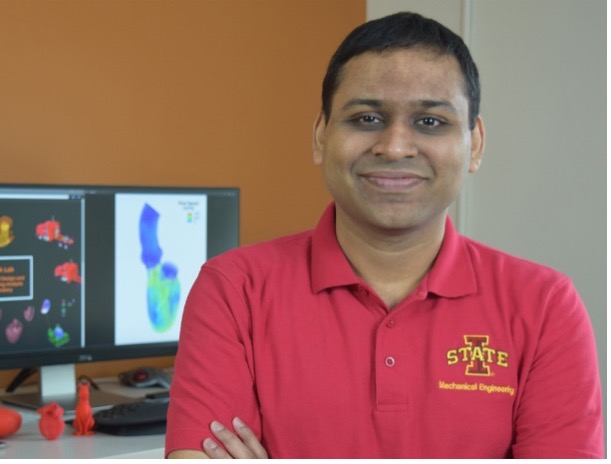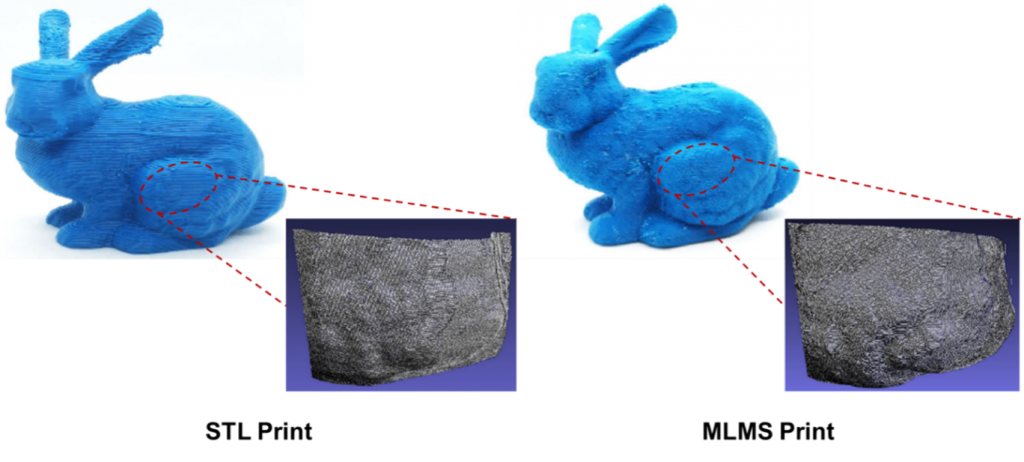
A team of mechanical engineering researchers at Iowa State University have developed what they hope can become a new, more efficient method for 3D printing of complex CAD models.
Adarsh Krishnamurthy, associate professor of mechanical engineering (ME), is leading the effort with support from ME students Sambit Ghadai and Anushrut Jignasu. The findings from their research were published online February 25 in the journal Additive Manufacturing, the third highest-rated engineering journal according to Scopus.

The researchers proposed a new method for 3D printing directly using voxels. This differs from traditional FDM (fused deposition modeling) 3D printing methods which use triangulated models (via STL files) that need to be sliced before being printed. This new approach also works for large volumetric data, like MRI and CT scans, where they can directly print the model. The researchers also generate print directives, called “G-code,” which is then sent to the printer to directly print the model.
“One of the advantages of this method is that the surface quality of printed models is equivalent and in some cases better than the traditional STL models,” said Krishnamurthy, who also serves as a research associate for Iowa State University’s Center for Multiphase Flow Research and Education. “Another advantage is that we are able to 3D print MRI and CT scan data such as cardiac models.”

For this project, the researchers utilized Computer Aided Design (CAD) and Computer-Aided Manufacturing (CAM) techniques, with computational geometry to compute the part boundary and infill for the additive manufacturing of CAD models. Ghadai, Ph.D. student, was responsible for developing the multi-level marching squares (MLMS) algorithm and the code, while Jignasu, undergraduate student, handled the 3D printing and testing of various models and compared their print quality. Krishnamurthy oversaw the entirety of the project and advised his students as necessary.
This project builds upon past work done by Krishnamurthy, particularly a 2018 article that he co-authored with Gavin Yong in the journal Computers & Graphics, that uses graphics processing units (GPUs) to construct multi-level voxelization of complex CAD geometries. Krishnamurthy said he thinks their most recent findings can be applied to future additive manufacturing projects, such as when generating an end-to-end system for 3D printing which works solely on voxelized geometries. The findings from this research may have some applications directly relevant to industries in Iowa, especially with the increased interest in additive manufacturing. They hope to partner with Iowa State University’s Center for Industrial Research and Service (CIRAS) to help Iowa industries adopt this new methodology.

“It can be used for rapid prototyping purposes as one of the main advantages of using our method is better surface finish and the ability to 3D print dense volumetric data, without requiring complicated CAD cleanup,” said Krishnamurthy, adding that they hope to work with the Iowa Economic Development Authority to develop an additive manufacturing pipeline for secure cyber manufacturing.
Work on this project started during fall of 2019. Funding was provided in part by the National Science Foundation (Grants 1644441 and 1750865). The journal article was published open access through a Iowa State University Open Access Subvention Grant.
